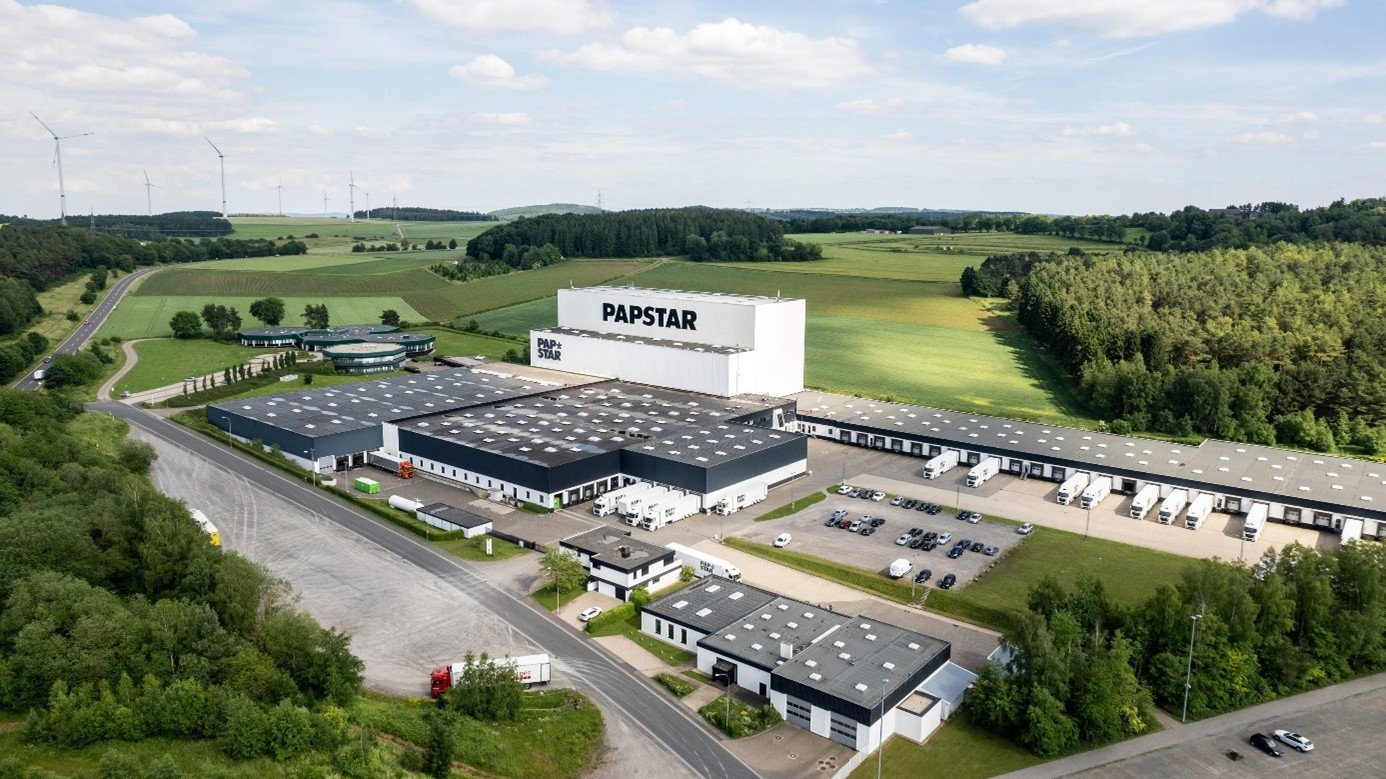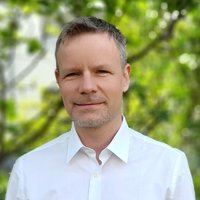PAPSTAR, based in Kall in the Eifel region, sells disposable tableware, service packaging, tabletop products, and other disposable products throughout Europe, particularly for the catering industry. The company has been pursuing a sustainable transformation since 2006. How does that work with such a product portfolio? We asked Andreas Köller, Head of Quality and Environmental Management, and Ansgar Kienolth, Head of CSR/Compliance.
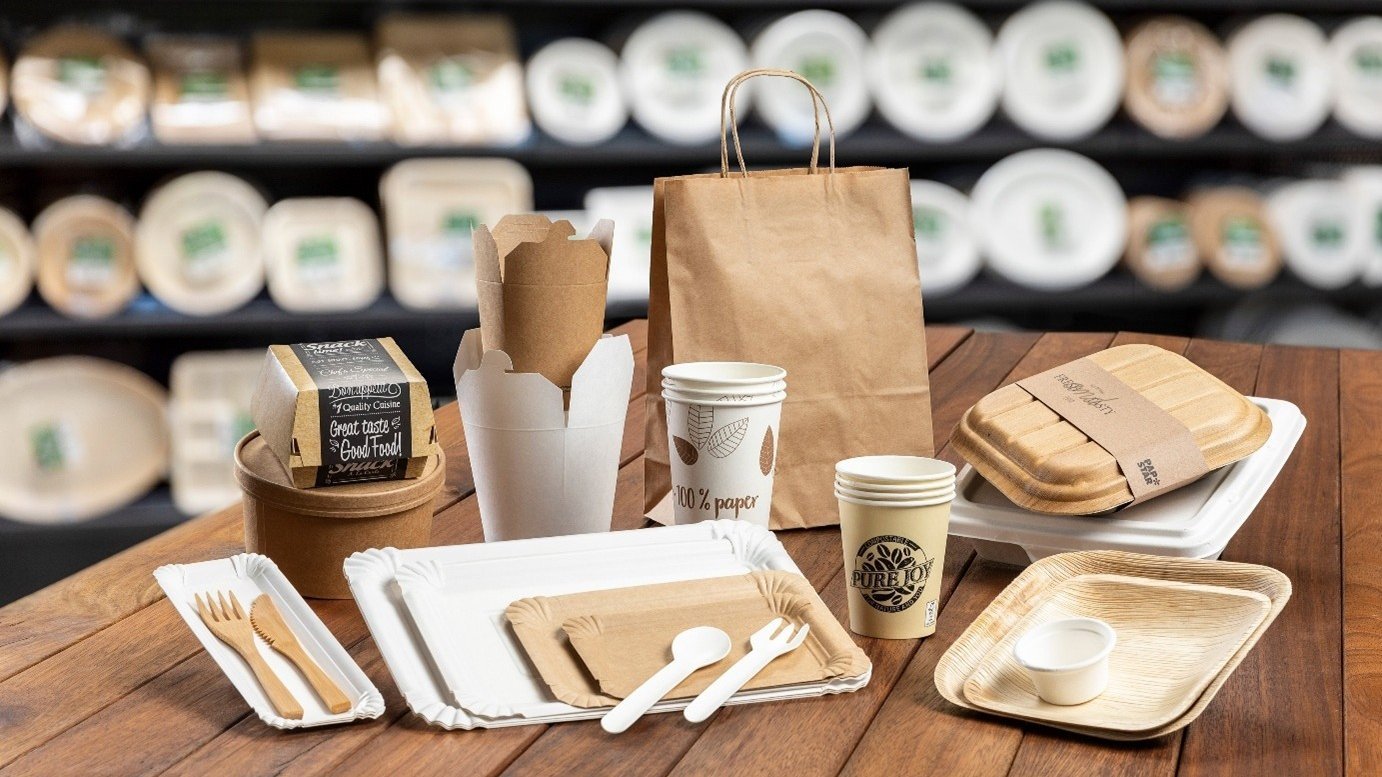
Mr. Köller, Mr. Kienolth, PAPSTAR is considered an industry pioneer in sustainability. How did this come about?
Andreas Köller: PAPSTAR has its roots in paper plates: that's our DNA, which many people associate with the company. And paper—i.e., wood—is a renewable raw material. So the idea of developing an entire product line of disposable products made from renewable raw materials came about early on. In 2006, we launched the “pure” line. At that time, the discussion about plastic and environmental pollution was not yet so prevalent.
Where do you source your wood—and is it certified as sustainable?
Köller: We source our fiber-based products from producers in Europe and Asia. A large part of our range is already certified according to recognized standards for sustainable forestry. We want to consistently expand this share in the coming years.
Do you only sell disposable paper products under the “pure” brand?
Köller: Not only. Today, this product line includes products made from wood as well as materials such as sugar cane, palm leaves, and corn starch.
But you don't just have products made from renewable raw materials in your portfolio, do you?
Ansgar Kienolth: That's right. We also sell products made of aluminum or containing plastic components. Even the classic paper cup contains polymers: it needs a minimal barrier layer, otherwise it would get soaked. However, we already offer versions of this product with a water-based coating, which significantly reduces the amount of polymers used compared to plastic-based coatings.
Köller: In other product areas, such as garbage bags, for example, we have little choice but to use plastics. But we now sell such products under our own brand. PAPSTAR, on the other hand, stands exclusively for products made from renewable raw materials.
What adjustments are you making on your path to greater sustainability?
Köller: At PAPSTAR, we pursue a three-pillar strategy. The first pillar is innovation in products and materials—keyword: renewable raw materials. The second is the development of a sustainable infrastructure, both internally and beyond our company boundaries. The third pillar is our supply chain, including the provision of recycling concepts for our products after use.
Kienolth: We began establishing an environmental management system back in 2010 and started monitoring our resource consumption and taking measures to reduce it on an ongoing basis at a very early stage. Since then, we have switched to LED lighting, trained our drivers in eco-driving, and optimized our vehicle fleet, for example. We are a member of the UN Global Compact and receive annual advice from EcoVadis. And, of course, we have to report our sustainability performance in supplier questionnaires that we receive from our customers.
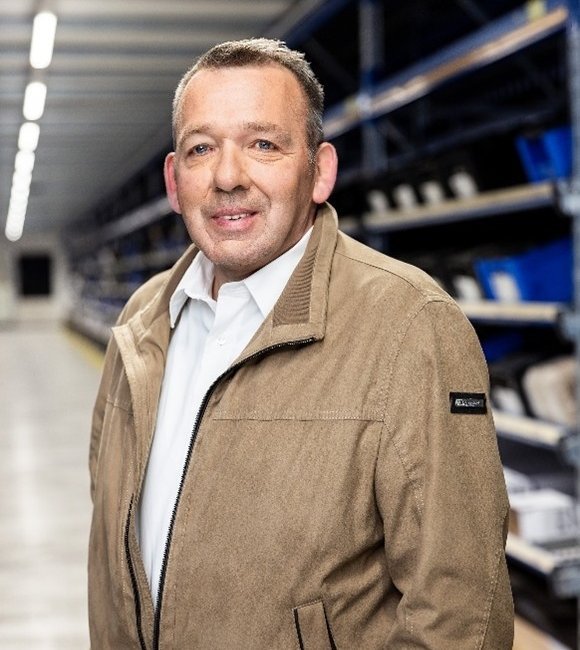
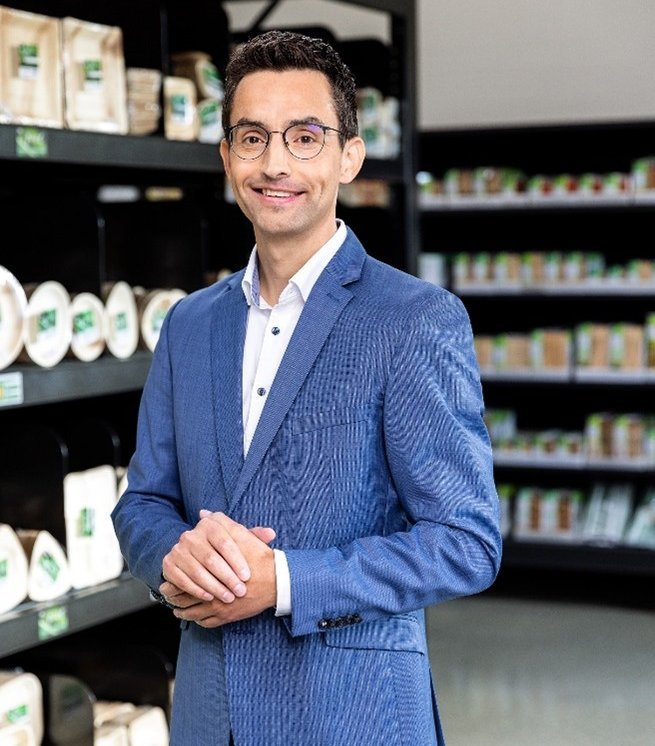
EcoVadis gave you an overall rating of 75 out of 100 points, which is equivalent to an “advanced” rating. In the area of the environment, PAPSTAR even scored 83 points. In terms of sustainable procurement, however, there is still room for improvement with 69 points – what are you currently working on in this area?
Kienolth: We are currently working on further developing our sustainable procurement process in a targeted manner and adapting it to current requirements. Although we have been conducting CSR audits of our suppliers for several years, we would like to modernize and expand this process. We are also currently revising our sustainable procurement policy and adding further content. In doing so, we are not only pursuing the goal of continuously improving our EcoVadis rating, but above all of fulfilling our corporate responsibility for the supply chain. Transparent and comprehensible criteria help us to better manage social and environmental risks, promote fair working conditions, and build sustainable partnerships with our suppliers.
How do you manage your own supply chain? Does PAPSTAR also require suppliers to provide proof of sustainability?
Kienolth: We make sure to only use suppliers who have undergone a standardized CSR process. This involves questions such as: What are the working conditions like in the company, what are the social standards? Are minimum wage requirements being met? Our main suppliers must also be certified by EcoVadis and prove that they are committed to reducing their environmental impact.
Does every supplier have to provide such data?
Kienolth: Every supplier from a high-risk country has received a CSR questionnaire from us. In addition, our purchasing manager personally visits the production sites at regular intervals. And, as I said, the main suppliers who deliver the majority of the goods must be certified by EcoVadis and have their CO2 emissions tracked at their sites.
Köller: In addition to the value chain, we at PAPSTAR go one step further. We ask ourselves: What actually happens to our products after they have been used? And that brings us to the topic of the circular economy.
How does that work in practice with disposable tableware—a throwaway product?
Köller: We asked ourselves: What approaches are there for returning our products to the cycle after use? Originally, our idea was: Our products are made from biomass—we can put them back into the fields. That would be the ideal cycle. But so far, the legislature has thwarted our plans. There are many legal provisions that prevent innovative solutions.
Which laws do you mean specifically?
Köller: The Organic Waste Ordinance, for example. Our products cannot be composted and returned to the fields. This is related to the Animal By-products Ordinance and the Hygiene Ordinance. The concern behind this is that germs from food residues could enter the environment. The problem is that the ordinance is 30 years old. Today, however, there are processes such as the use of bioconverters, which allow us to treat single-use products made from renewable raw materials in-house after use, thus ensuring that no pathogenic germs are released into the environment. The law still does not take this into account.
Can you map such cycles for all products?
Köller: Yes, for our biomass products. We can treat paper cups in our bioconverter and recover 90 percent of the cellulose. Together with a partner company, we can collect PLA cups made from corn starch and process them into granulate, which is then used to make new products. In addition, we are working with partners to test the conversion of our products into biochar—an exciting approach to CO2 sequestration.
All these processes require return systems to be in place. How is that supposed to work? People usually just throw away the paper cups they buy at the supermarket.
Köller: It's true: circular economy only works in conjunction with the distribution channel. At events such as festivals, which we supply, this is already possible: we set up return stations for our products after use – and of course we depend on consumers to participate. There are also closed systems, such as central kitchens, which prepare food and distribute it to several establishments. For food distribution, the food is portioned into customer-specific sugarcane containers and then returned to us. We process them in the bioconverter and can then reuse the cellulose obtained as raw materials. But we can only do this if we can accompany the entire cycle at the customer's premises. As things stand today, we cannot guarantee a closed loop once our products are sold over the counter. But we hope that solutions will be found in the future.
Critics will now say: That's all well and good – but disposable tableware has a worse carbon footprint than reusable products.
Köller: That's not true. Apart from the logistical advantages – kitchen staff don't have to carry such heavy loads when they use our products – there are also tangible climate reasons that speak in favor of our products. It is significantly lighter, takes up less space during transport, and does not need to be washed, which also saves CO2. If it is then almost completely recycled, the carbon footprint can be smaller than that of hard tableware. So it is impossible to say definitively which of the two is more climate-friendly. It depends on the individual case.
Where do you currently see the greatest opportunities in terms of sustainability?
Kienolth: For us, sustainability is an efficiency and therefore a competitive advantage. We track our consumption via management systems and look at which reduction measures make sense. Two years ago, we also launched an energy project with the aim of meeting the requirements of the German Climate Protection Act at our site. For example, through the use of photovoltaics, gas substitution, and perhaps soon small wind turbines. By increasing our use of renewable energies, we are not only reducing our CO2 emissions, but also our operating costs in the medium term—an advantage that also directly benefits our customers.
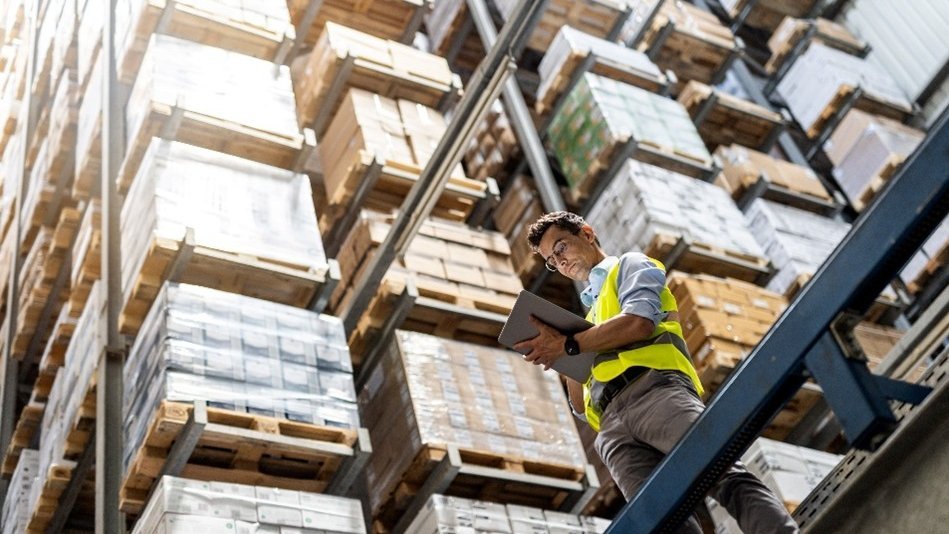
Are there any risks involved in this approach?
Kienolth: Yes, outdated legal requirements are also hindering progress in this area. There are also risks arising from the fact that downstream players—such as waste management companies—have so far been unable to implement innovative solutions such as industrial composting due to economic interests and legal constraints.
Who are you referring to specifically?
Kienolth: For economic reasons, waste management companies primarily focus on recyclable materials. On the other hand, there are fewer incentives for renewable raw materials that can be composted – not least because the legal framework has so far made industrial composting of disposable tableware difficult. From a sustainability perspective, this is not conducive to achieving the desired goal: on the one hand, legislators want to restrict the use of plastics, but on the other hand, there is a lack of opportunities to compost bio-based products industrially and thus return biomass to the cycle. Instead, they often end up being incinerated. This example shows that legislators need to consider the value chain as a whole and at the same time set the right course to achieve real ecological progress.
How do you assess developments in reporting requirements?
Köller: Perhaps first of all, we believe that conducting a materiality analysis should be a must for every company. This is the only way to see where you can make the most valuable contribution in terms of sustainability. Another point is the reporting requirements. These tie up resources—especially when they contain as many data points as the CSRD.
Does your company currently fall under the CSRD requirement?
Köller: As things stand at present (as of September 2025), that is still open. But we assume that companies of our size will no longer be affected. Nevertheless, we will continue to voluntarily inform our stakeholders and customers, our employees, and banks about what we are doing in terms of sustainability.
What standards do you intend to use for reporting in the future?
Kienolth: As mentioned, we report annually on our progress in the areas of ESG (environmental, social, and governance) in the EcoVadis reassessment and in the UN Global Compact progress report (COP). So we are already doing a lot in this regard. We are currently examining whether, for example, the VSME standard is a suitable alternative to the CSRD for us. It would be good if, in the future, we didn't have to do double or triple the work for the reports, but instead only had to collect a binding, not overly complex data set once.
Are you afraid that the CSRD—now streamlined but still quite complex with 243 data points—will come after all?
Köller: We're not afraid. We have already prepared software and structures for the CSRD. But the administrative effort is high and ties up resources that may be lacking when it comes to implementing concrete measures.
What would you like to promote? In other words, what sustainability goals has PAPSTAR defined?
Kienolth: In our latest sustainability report for 2023/2024, we have set out specific goals relating to all ESG areas. Specifically, for example, we state that we want to reduce our CO₂ emissions at our Kall site in Scope 1 and 2 by 50 percent compared to 2012. In addition, there are specific individual goals in the areas of occupational safety, employee health, and education.
Köller: As already mentioned, the continuous optimization of sustainable procurement is also a goal. We only work with suppliers who meet our standards and actively care about environmental and social issues.
How did you arrive at the 50 percent figure? And what is the roadmap for achieving this?
Köller: The goal of reducing CO2 emissions in Scope 1 and 2 by 50 percent is ambitious, but realistic. We deliberately defined it based on developments in recent years. We have already been able to reduce our emissions in this area by almost 40 percent compared to 2012. To close the remaining gap, we are focusing on our energy project with various areas of action – from the energy-efficient renovation of our buildings to the increased use of alternative energy sources and the optimization of our vehicle fleet and technology. In addition, there are immediate measures and the continuous sensitization of our employees. All these steps together form our roadmap for consistently achieving the 50 percent target.
How far along are you on this path?
Kienolth: For example, we have already reduced our electricity consumption at our site by 40 percent. The average fuel consumption of our trucks is now 21.2 liters – down from over 26 liters. When you talk to people in the transport industry, they think that's enormous.
Which specific processes are currently particularly affected by the transformation?
Kienolth: A transformation cannot be viewed in isolation. All business processes are affected by the management systems we use here at the site. This starts with purchasing and procurement, continues through manufacturing, warehousing, and logistics, and extends to sales. Here, too, we are trying to offer more sustainable concepts.
Köller: In addition, we have defined parameters in the management systems that continuously demand improvements in energy efficiency and environmental protection. No department can escape this.
Kienolth: And the auditors who audit us every year are not satisfied with constant values either. They want to see continuous improvement.
Where do you see the greatest challenges in achieving improvements?
Kienolth: We currently see the greatest challenges in the fact that we addressed the reduction of our resource consumption very early on and intensively through our environmental management system—and therefore much of the potential has already been exhausted. Further improvements can essentially only be achieved through larger investments, for example in the installation of photovoltaic systems including storage solutions or in the energy-efficient renovation of our buildings. In addition, the funding landscape is often opaque and applying for the relevant funds involves a great deal of effort.
How are you financing the transformation?
Köller: So far, PAPSTAR has been able to finance all investments in sustainability from its own resources. We are proceeding step by step and paying attention to the economic efficiency of the respective measures. However, it is also true that the effort and costs involved in the transformation are not insignificant. Last but not least, we are convinced that this is the right path to take, and our aim is to play a pioneering role here.
Finally, what is your wish for the future?
Kienolth: We hope for more uniformity in reporting requirements and that all players in the value chain will get on board. Only together can we truly implement the Green Deal.
About the company
PAPSTAR is an international company headquartered in Kall, Germany, specializing in the sale of disposable tableware, service packaging, table and room decorations, and disposable products for households, professional kitchens, hygiene, and care. In its “pure” product line, PAPSTAR exclusively sells items made from renewable raw materials such as wood, sugar cane, or palm leaves. The company employs 320 people at its site in Kall.
